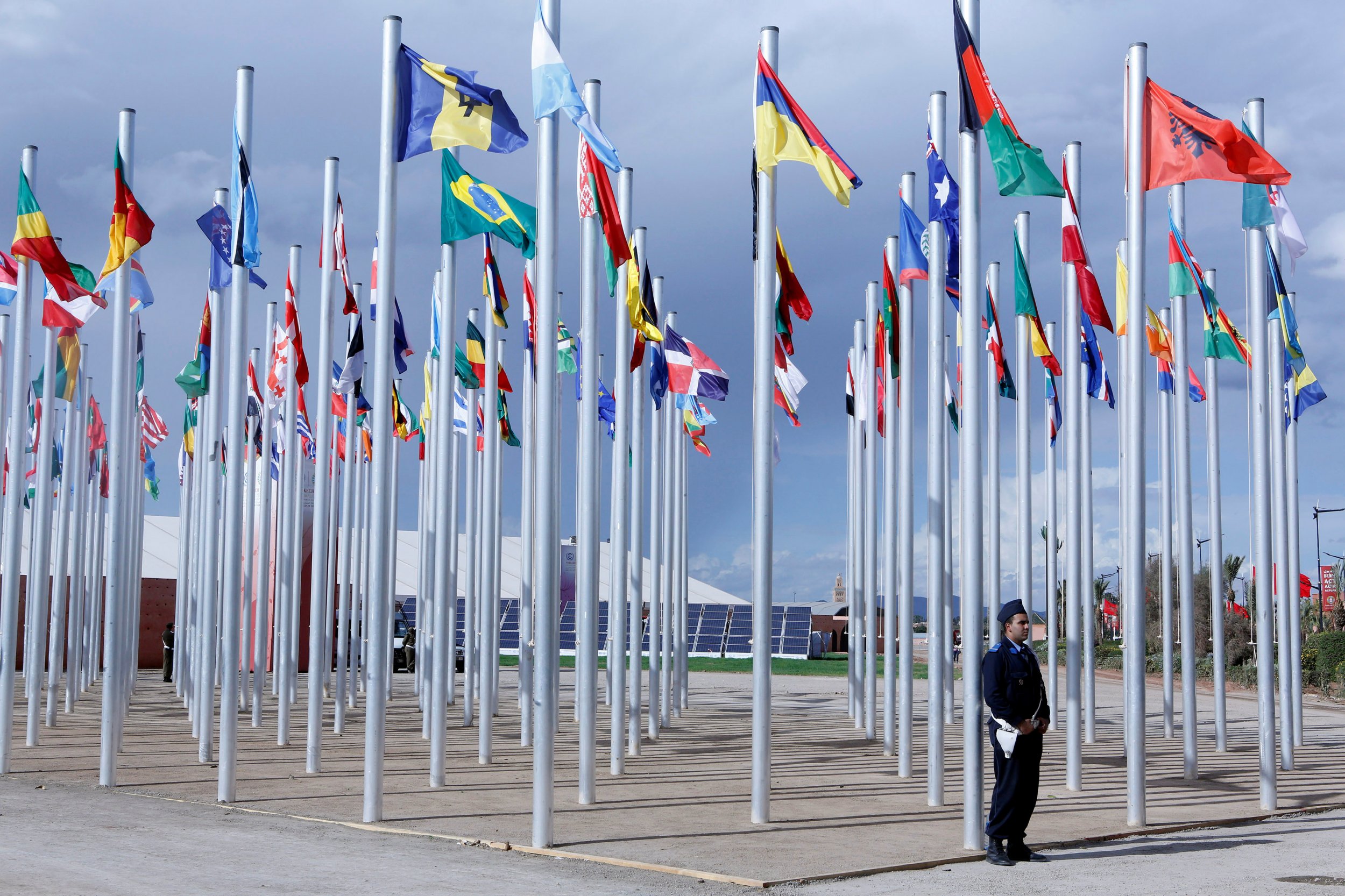
The 2016 United Nations climate change conference in Marrakech ended earlier this month with reaffirmation by nearly 200 countries of their "highest political commitment" to combating global warming.
With the landmark Paris agreement now ratified, the conference delivered what former U.S. Vice President Al Gore called a "bold vision that sets the pace for the world's efforts to implement the deal."
This reflects the fact that a highlight of the conference were the presentations by individual countries of their plans to achieve agreed national greenhouse gas cuts targets. This is a key step and reflects the fact that Paris is a flexible, "bottom-up" approach whereby nations develop bespoke plans to realize emissions targets with national and sub-national governments working in partnership with business.
In other words, while Paris created a global architecture for tackling global warming, it recognizes that diverse, often decentralized, policies will be required by different types of economies to meet climate commitments.
While the wisdom of this appears obvious, it represents a breakthrough from the more rigid "top-down" Kyoto Protocol framework. While Kyoto worked in 1997 for the 37 developed countries and the EU states who agreed it, a different way of working is needed for the more complex Paris deal that involves more than 170 diverse developing and developed states that agreed to reduce global carbon dioxide emissions by 80 percent by 2050.
That this approach makes sense is reflected in the diversity of climate measures that countries, pre-Paris, had started to make in response to global warming. This was illustrated in a 2015 report by the Grantham Institute at the London School of Economics that focused on 98 countries plus the EU, together accounting for 93 percent of global greenhouse gas emissions, and revealed there are more than 800 climate change laws and policies in place across the world, rising from 54 in 1997.
Approximately half of these (398) were legislative measures, and half (408) executive actions (e.g. decrees). And 46 new laws and policies were passed in the 12 months prior alone—highlighting that domestic measures to address global warming are being approved at an increasing rate.
Related: How climate change advocates plan to fight the next four years under Trump
Some 45 countries, including the 28 EU members as a bloc, have economy wide targets to reduce their emissions. Together, they account for over 75 percent of global emissions.
In addition, 41 states have economy-wide targets up to 2020, and 22 have targets beyond 2020. Moreover, 86 countries have specific targets for renewable energy, energy demand, transportation or land-use, land-use change and forestry, while 80 percent of countries have renewable targets; the majority are executive policies.
This underlines that the best way to tackle climate change, going forward, is a decentralized approach with nations meeting their target commitments in innovative and effective ways that builds on this momentum.
Take the example of Morocco, the host of this month's summit, which has become a leader in renewables. The country gets nearly 30 percent of its energy from renewable energy and is aiming for a goal of 50 percent by 2030. It is an agenda setter on renewables for other emerging economies, including in North Africa with countries like Tunisia, and one of the highlights of this month's summit was a pledge by almost 50 emerging markets from Africa to the Americas to try to become zero carbon societies by 2050 driven by these "new" energies.
A key part of the drive here is harnessing how renewables could drive a remarkable new industrial revolution potentially becoming a key source of economic growth and sustainable development. This parallels the original industrial revolution, originating in the U.K., which was powered by fossil fuels.
In Morocco, the drive toward renewables has been driven by a national master plan (the "Plan Maroc Vert") that relies on a combination of foreign direct investment and public sector monies to fund not just big infrastructure projects like solar and wind plants, but also less expensive local, small-scale initiatives to encourage key eco-friendly projects, including in agriculture. The idea is to completely integrate low carbon usage into the fabric of society with, for instance, more than 600 mosques across the country being equipped with solar panels.
Therefore, as well as major power projects, such as the EnergiPro initiative that has provided Africa's largest wind farm, and what will become the largest concentrated solar power plant in the world at Ouarzazate, there is emphasis on encouraging the agricultural sector (which employs more than 40 percent of the workforce) to become more climate-conscious. There are big plans underway, for instance, with irrigation systems to reduce use of water and energy.
Morocco's moves here are underpinned, in part, through international collaboration that highlights another key strength of the Paris agreement's emphasis on decentralized solutions as the international partnerships spawning between regions, cities and institutions right across the world. For instance, the University of Hull in northern England has forged a relationship with the International University of Agadir, Universiapolis, to share climate research insights and technological solutions to help realize Morocco's goals to promote lower carbon growth.
Hull is collaborating with Universiapolis on various key initiatives, including work on the benefits of moving from water and energy intensive irrigation systems in the Souss-Massa-Draa region, to setting up a regional logistics observatory to promote the logistics and supply chain capabilities. The reason why Hull is such a good partner for Universiapolis is the Humber region of northern England's own experience in recent years of moving toward a low carbon estuarial economy through innovative initiatives such as deployment of renewal wind turbines.
Taken overall, Marrakech highlighted key reasons for optimism in the fight against global warming. Paris provides a resilient, flexible framework for climate action that could potentially become a key foundation stone of future sustainable development for billions across the world.
John Prescott was U.K. deputy prime minister from 1997 to 2007 and Europe's chief negotiator for the Kyoto Protocol. Andrew Hammond is an associate at LSE IDEAS (the Centre for International Affairs, Diplomacy and Strategy) at the London School of Economics.
Uncommon Knowledge
Newsweek is committed to challenging conventional wisdom and finding connections in the search for common ground.
Newsweek is committed to challenging conventional wisdom and finding connections in the search for common ground.
About the writer
To read how Newsweek uses AI as a newsroom tool, Click here.






